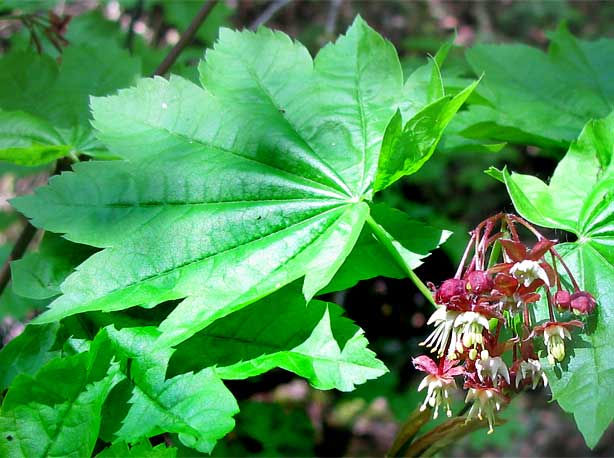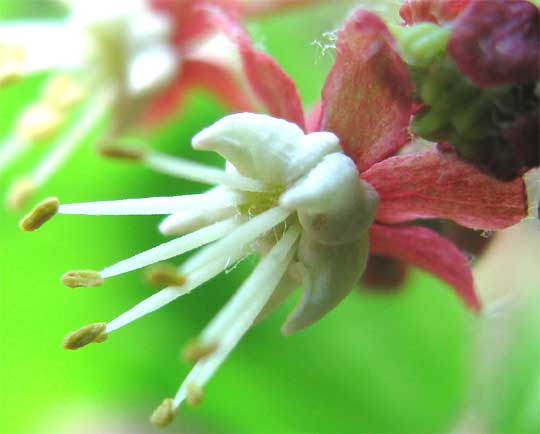Excerpts from Jim Conrad's
Naturalist Newsletter

from the the May 17, 2009 Newsletter, issued from the Siskiyou Mountains west of Grants Pass, Oregon:
VINE MAPLES FLOWERING
One woody plant fairly common here and there in the Redwood forest was the Vine Maple, ACER CIRCINATUM, whose opposite, palmate-veined, five-inch-wide leaves and red and white flowers are shown above.
If you regard a vine as strictly a plant that twines like a morning-glory or rambles like a Sweet Potato vine, Vine Maples aren't viny at all. They're shrubs or small trees up to 40 feet tall with very spindly stems that tend to lean onto or sprawl atop other vegetation if the stems grow long enough.

Above a close-up of the Vine Maple's pretty flower shows some interesting departures from the "Standard Blossom" I often refer to. First, the reddish, petal-like things aren't petals at all but rather calyx lobes, or sepals, which normally are green like the rest of the calyx, and hardly developed at all. The corolla's actual five white petals have the approximate shape of a scoop opening toward the flower's center. It's typical for a flower either to have a large number of stamens, or else five or multiples of five. In the Maple Family, in contrast, most species bear eight stamens, and that's the case with the flower.
Vine Maples are fairly common and occur from southern British Columbia south into northern California. On moist, sheltered, recently clearcut or burnt mountain slopes sometimes Vine Maples form impenetrable thickets. The species is a favorite browse for deer. In the fall its bright red leaves contribute a lot the scenic autumn landscape. In fact, Vine Maples are so pretty that sometimes they're planted as ornamentals. They are closely related to the frequently-planted Fullmoon and Korean Maples, both from Asia.